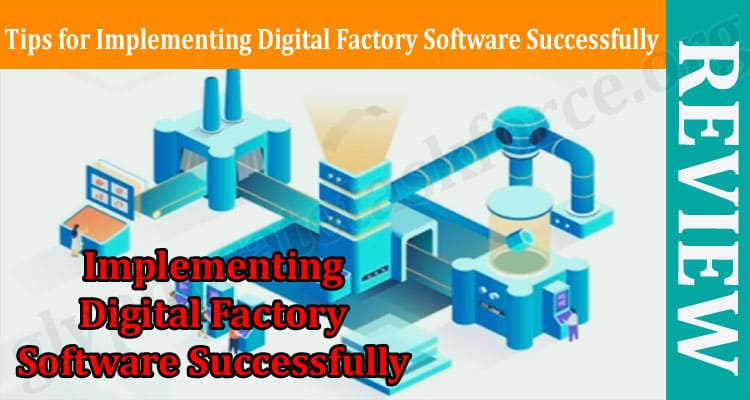The digital factory software solution is a comprehensive, cloud-based product that enables discrete manufacturers to optimize their production planning and execution processes. A digital factory describes a manufacturing process that relies heavily on digital technology. It refers to computer-aided design (CAD) and computer-aided manufacturing (CAM) software to control the production process. Digital factory software can be an excellent asset for any business. However, like any software, there are certain things you need to do to ensure its success. Keep reading to learn how to implement digital factory software successfully.
What is digital factory software?
A digital factory concept can be used to produce various products, including automobiles, aircraft parts, and consumer goods. The solution provides a centralized source of information for all aspects of the manufacturing process, from design through delivery. It includes process planning, scheduling, tracking production progress, quality management, and inventory management modules.
The digital factory solution can be implemented quickly and easily, with minimal disruption to current operations. It’s also scalable, so it can be adapted to meet the needs of any manufacturer, regardless of size or complexity. The software is regularly updated with new features and enhancements, so users access the latest technology.
The digital factory software solution has been proven to help manufacturers achieve significant improvements in productivity and efficiency. In particular, it enables manufacturers to:
- Plan and execute production processes more effectively
- Reduce waste and improve quality control
- Maximize inventory efficiency
- Improve customer service
Define your digital factory goals and objectives.
When implementing digital factory software, it’s essential to set goals and objectives for the factory workflow. This will help to ensure that the software is implemented successfully and provides the desired benefits. Some goals that can be set include increasing efficiency, reducing waste, improving quality, and speeding up time to market.
Objectives could include specific targets such as reducing cycle time or increasing throughput. Once the goals and objectives have been identified, the next step is to develop a plan for how they will be achieved. The plan should determine which parts of the factory need to be upgraded or changed to support the new software and who will be responsible for making these changes. It’s also essential to establish timelines for completing each step of the plan so that everyone involved knows what is expected of them. Finally, regular reviews should be conducted to ensure that progress is being made and that any issues are addressed quickly.
Integrate the software into your existing infrastructure.
Integrating the software into your existing infrastructure is important when implementing digital factory software. This will allow you to take advantage of your current systems and processes and make the transition to digital manufacturing a seamless experience. Here are a few tips for integrating digital factory software into your existing infrastructure:
Plan: When implementing new software, it’s important to plan and map out how the new system will fit into your existing infrastructure. This will help ensure no glitches during the implementation process and that the new system can be used effectively with your current systems.
Work with your vendors: When integrating digital factory software into your existing infrastructure, it’s important to work with your vendors to ensure that all aspects of the integration process are correctly handled. They can help you map out how the new system will interact with your current systems, and they can provide support during the implementation process.
Test everything thoroughly: Once the integration process is complete, test everything thoroughly before using the new system. This will help ensure there aren’t any problems with using the new system in conjunction with your existing infrastructure.
A few key things are important for a successful implementation of digital factory software: communication, collaboration, and training. Training is especially important, as employees need to be familiar with the software effectively. Having a clear plan and communicating it effectively to all stakeholders is critical. Finally, it’s important to be patient and allow time for the software to be fully implemented and adopted.


